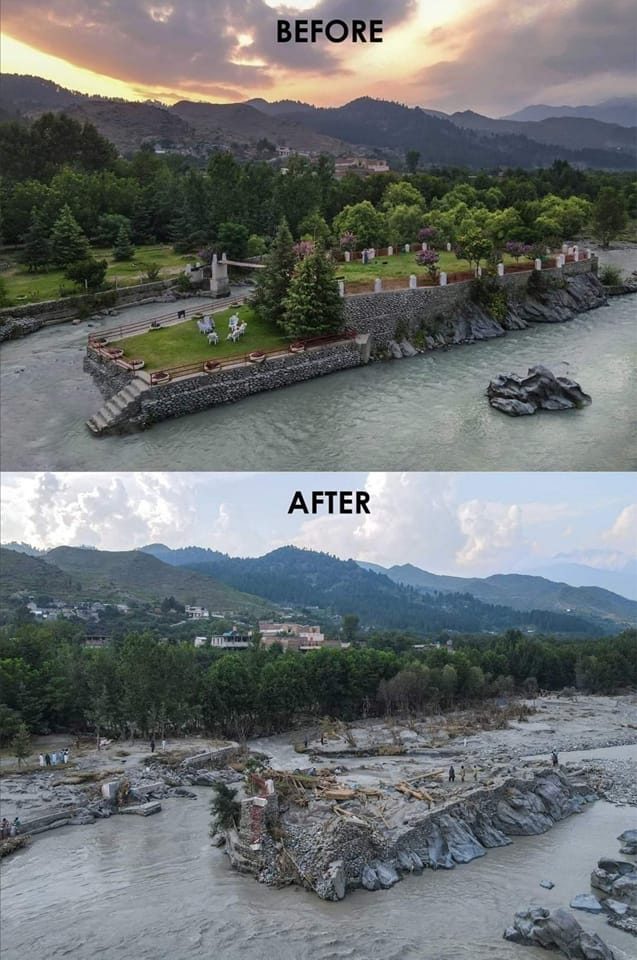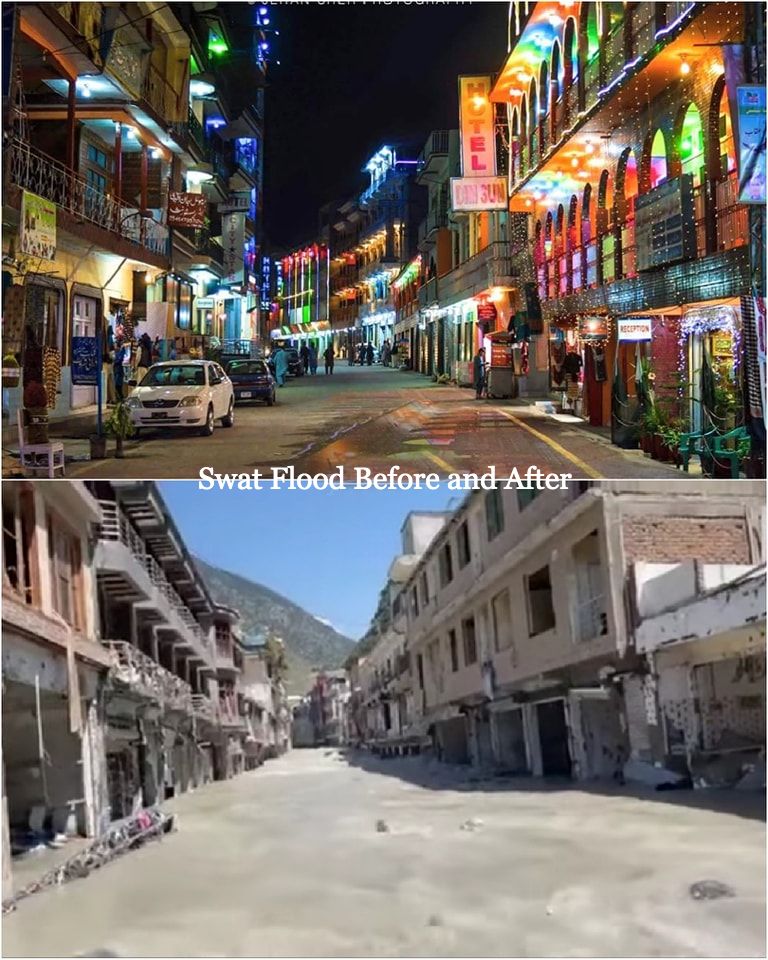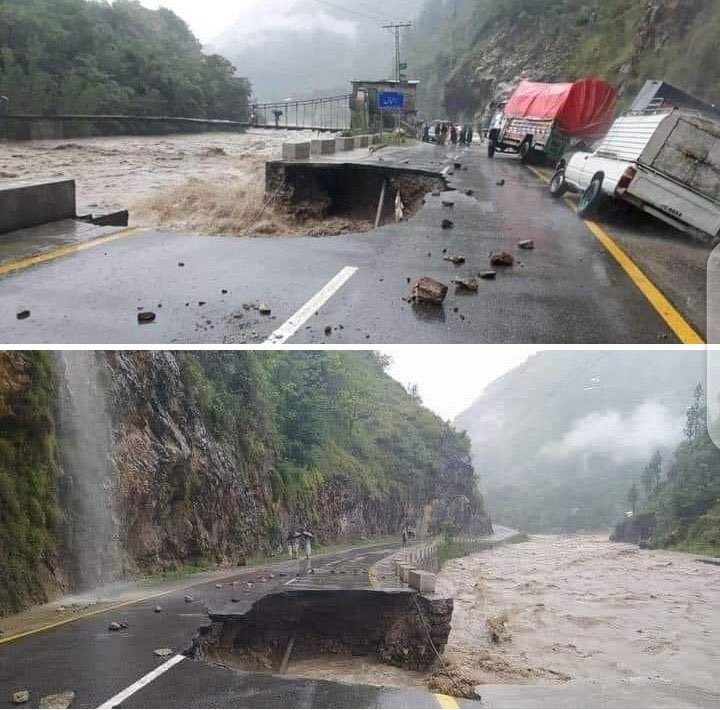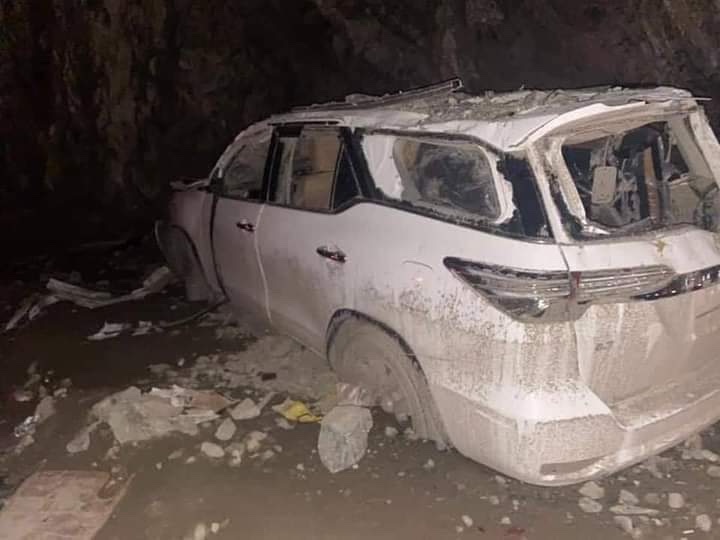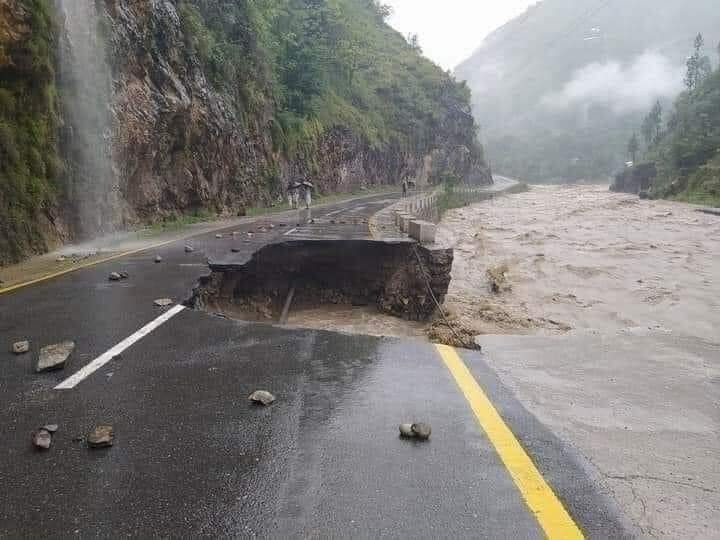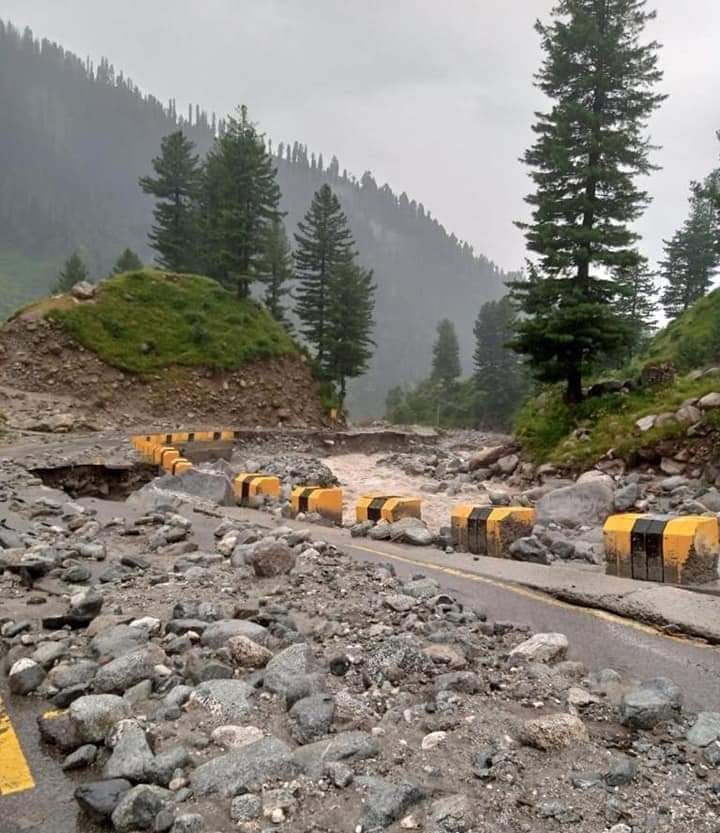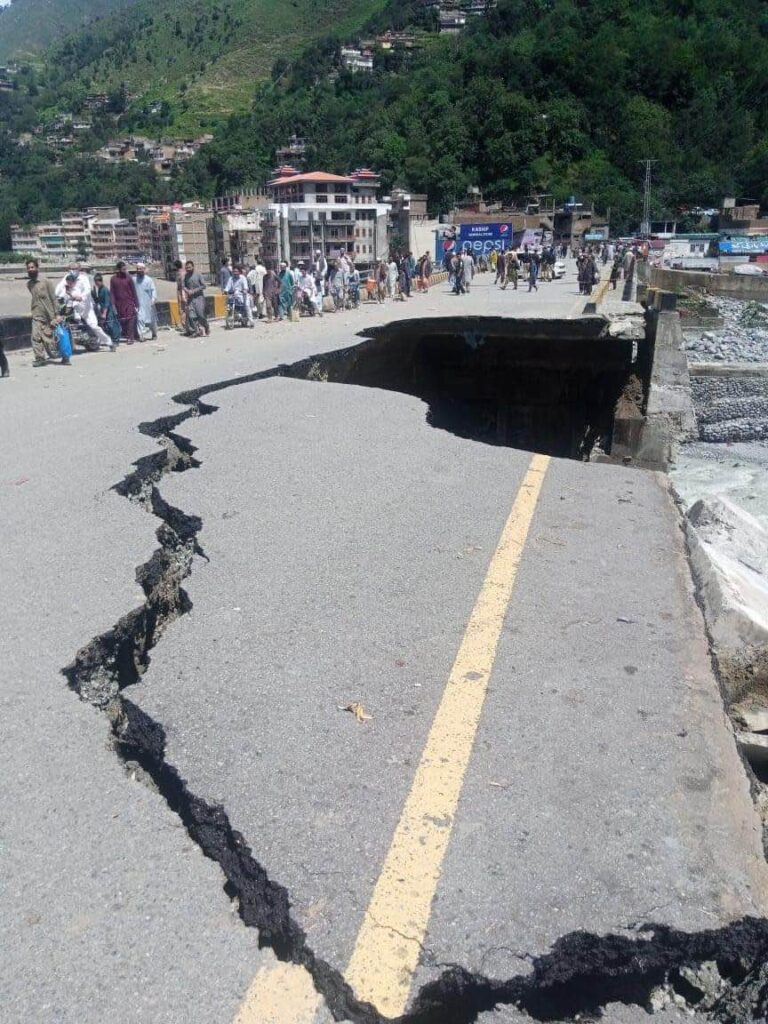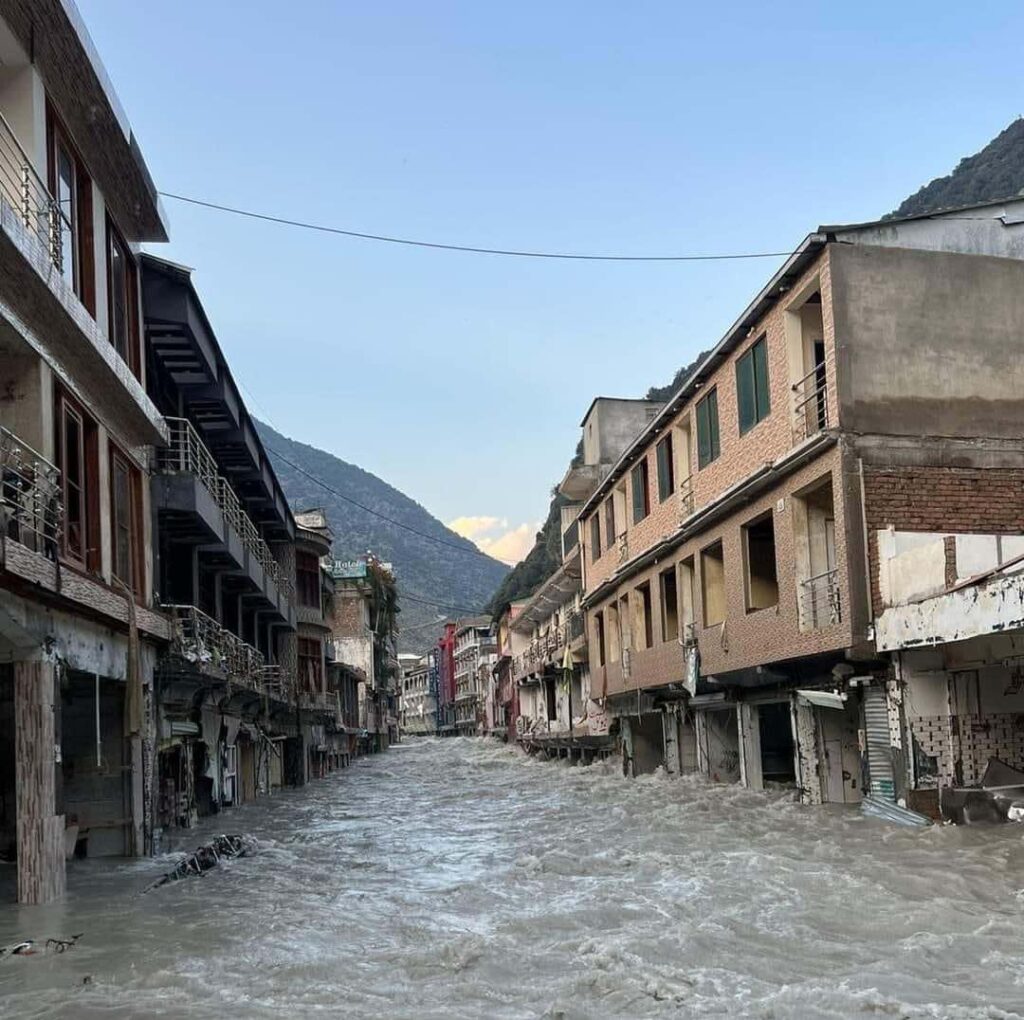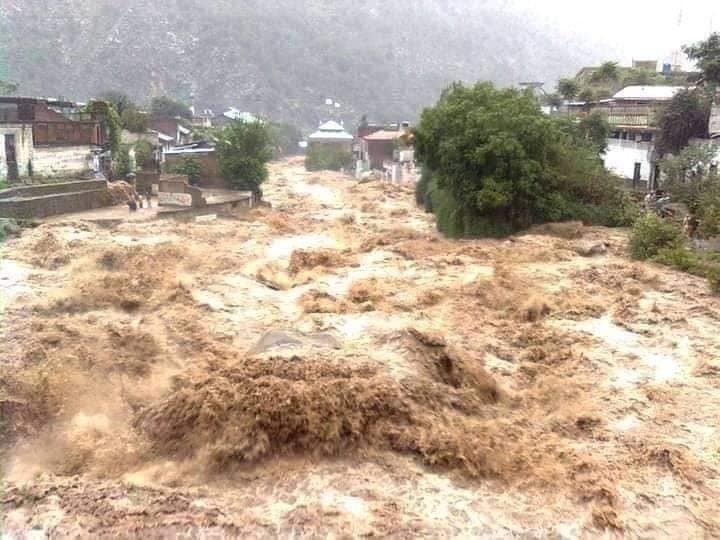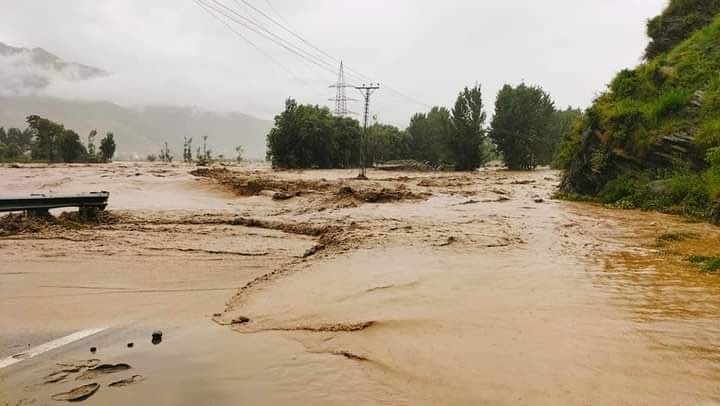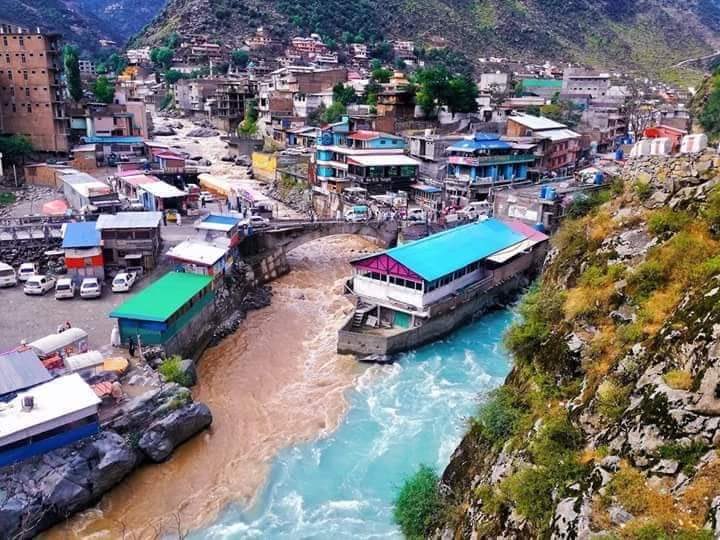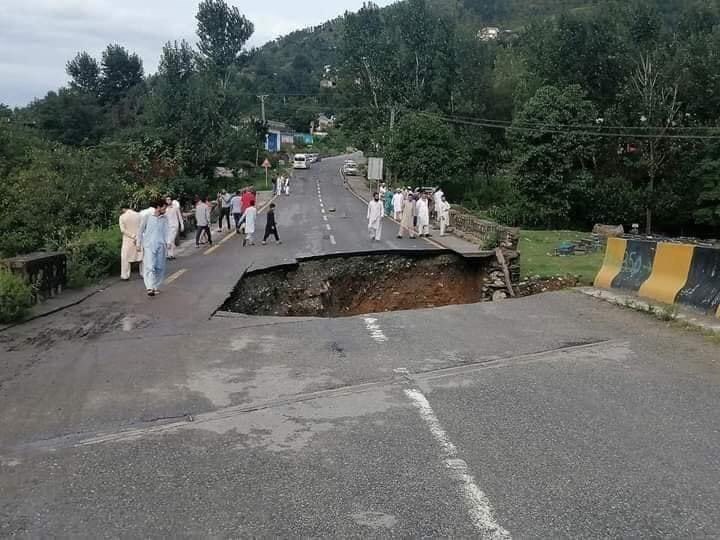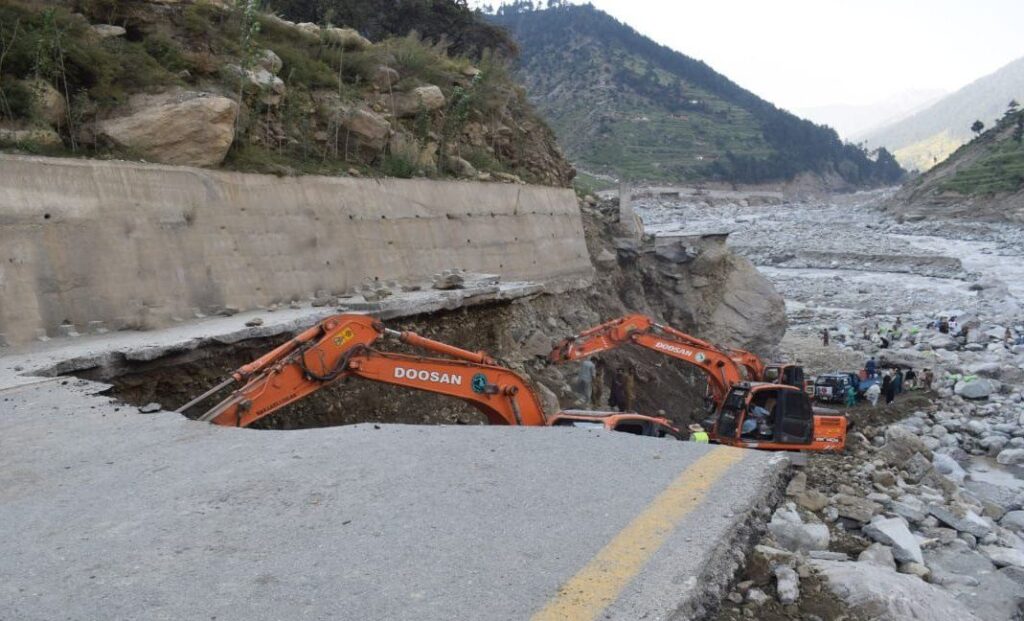Swat floods are commonly caused by seasonal monsoon rains, glacial meltwater, intense thunderstorms, or sudden cloudbursts. The geographical features of the Swat Valley, including its steep mountains and dense river system, make the area particularly prone to flash floods and landslides. These events often occur when heavy rainfall overwhelms the ground’s ability to absorb water or exceeds the capacity of drainage systems.
During floods, roads can quickly become flooded, turning into temporary rivers. Floodwaters may enter buildings, damage infrastructure, and sweep away vehicles. Flash flooding poses a significant risk to local communities, agriculture, and transportation networks in the region. Tourists visiting the area should exercise caution, as sudden floods can create dangerous travel conditions, including road closures, landslides, and limited access to emergency services. It is advisable to stay informed about weather updates and follow travel advisories during the flood season to ensure safety.
Root Causes of Flooding in Swat
Swat Valley’s terrain is characterized by steep mountains, narrow river gorges, and fast-flowing streams. The Swat River and its tributaries wind through the valley, playing a vital role in the local ecosystem and economy. However, these same rivers can become sources of destruction during periods of heavy rain.
The primary cause of flooding in Swat is the monsoon season, spanning from July to September. During this period, the region receives intense and sometimes prolonged rainfall. The soil, often already saturated or rocky due to mountainous conditions, cannot absorb such heavy precipitation effectively. This results in rapid runoff into rivers and streams.
Additional factors include:
Glacial Melt: Swat’s higher elevations house glaciers and snowfields. Rising temperatures during warmer months accelerate glacial melt, increasing water flow into rivers.
Cloudbursts: Sudden and intense bursts of rain in localized areas cause rapid surges in water volume, often leading to flash floods.
Deforestation and Land Use: Human activities such as deforestation and improper land use can exacerbate flood risks by reducing natural vegetation that slows water runoff and stabilizes soil.
How Cloudbursts Intensify Floods in Swat Valley?
A cloudburst is a sudden and extremely heavy rainfall event, usually dropping more than 100 mm of rain in an hour over a small area. It often occurs in mountainous regions when moisture-laden clouds are forced upward and release rain rapidly. Unlike normal rain, it is highly localized but very intense, creating conditions for flash floods within minutes.
In Swat, the mountainous terrain amplifies the impact of cloudbursts. The steep slopes cause rainwater to rush down quickly into rivers and streams, leading to flash floods that overflow the Swat River and its tributaries. This rapid surge of water damages roads, bridges, farmland, and settlements along the valleys. Deforestation and unplanned construction further reduce the land’s capacity to absorb water, making floods triggered by cloudbursts even more destructive.
Impact of Floods on Swat’s Infrastructure
The immediate consequences of floods in Swat include:
Destruction of Roads and Bridges: Floodwaters frequently wash away roads and bridges, cutting off access to remote areas. This isolation hampers rescue operations and the delivery of relief supplies.
Damage to Homes and Public Buildings: Floodwaters infiltrate residential areas, causing structural damage and loss of personal belongings.
Agricultural Losses: Swat’s economy relies heavily on agriculture. Floods damage crops, erode fertile soil, and disrupt planting cycles, leading to food insecurity.
Risk to Human Life: Sudden flash floods can catch people unaware, resulting in injuries and fatalities.
Displacement: Many families are forced to evacuate their homes, seeking shelter in safer locations or relief camps.
Because of these risks, tourists are advised to monitor weather reports closely, avoid travel during heavy rainfall, and adhere strictly to local safety advisories.
Flood Safety Measures
Flooding in the Swat Valley can occur suddenly and with great force, making it crucial for both residents and visitors to be well-prepared. Taking proactive steps can significantly reduce the risk of injury, loss of life, and property damage. Below are essential safety and preparedness measures to follow during the flood season:
Flood Safety Measures for Tourists
Stay Informed:
Regularly check weather forecasts from reliable sources such as the Pakistan Meteorological Department or local news outlets. Pay close attention to flood warnings or travel advisories issued by authorities.
Plan Travel Carefully:
Avoid traveling to or within Swat during peak monsoon months (July to September), especially if heavy rainfall is predicted. If travel is necessary, schedule your trips during daylight and allow extra time for delays.
Avoid Hazardous Routes:
Mountain roads can become dangerous or impassable during floods or landslides. Obey road closure signs and do not attempt to cross flooded roads or swollen rivers.
Emergency Supplies:
Carry a basic emergency kit including bottled water, non-perishable snacks, a flashlight with extra batteries, a first aid kit, and any necessary medications.
Communicate Plans:
Inform friends or family about your itinerary and expected arrival times. Keep your mobile phone charged and carry a portable charger if possible.
Follow Official Instructions:
In case of flood warnings or evacuations, follow directions from local authorities promptly and calmly. Do not ignore alerts or underestimate the severity of floods.
During Flood Safety Measures
Avoid walking or driving through floodwaters. Even shallow moving water can sweep people and vehicles away.
Seek higher ground immediately if water levels rise rapidly.
Stay away from electrical wires and power sources to avoid electrocution.
Follow evacuation orders without delay.
Keep emergency contacts handy and notify authorities if you or someone else is in danger.
After Flood Safety Measures
Return home only when authorities declare it safe.
Avoid drinking tap water until it is confirmed safe; use bottled or boiled water instead.
Inspect your home carefully for structural damage, gas leaks, or electrical hazards.
Clean and disinfect all areas affected by floodwater to prevent illness.
Report any injuries or urgent needs to emergency services.

